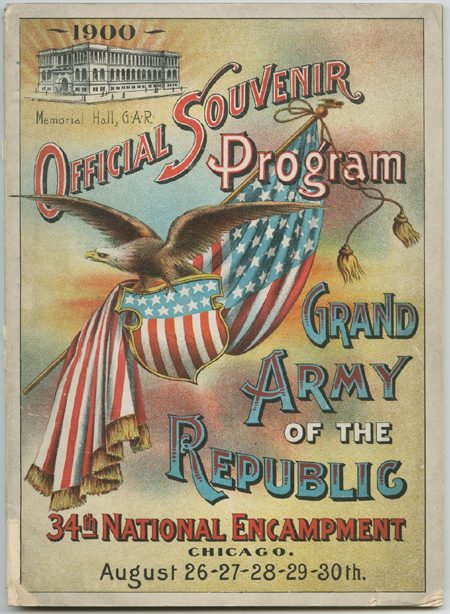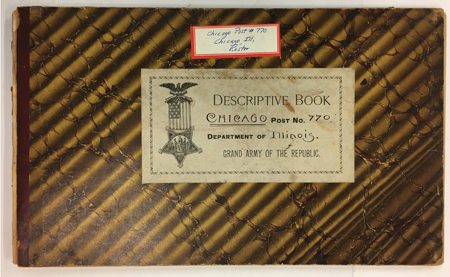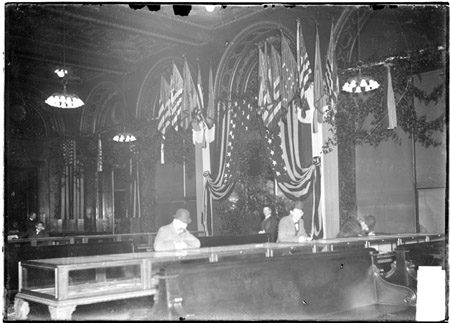CHM collections volunteer Robert Blythe details the history and contents of the Grand Army of the Republic, Department of Illinois records in our Research Center.
During the Civil War, some 2.7 million men served in Union blue from 1861 to 1865. To preserve their bonds of comradeship and ensure that veterans and their families received sufficient care, many of these men joined the Grand Army of the Republic (GAR). The organization was both a fraternal order, similar to the Elks or Odd Fellows, and a potent lobbying force on veterans’ issues. The GAR took on a military structure with hundreds of local posts that were organized into departments embracing one or more states.

The cover of the souvenir program for the 34th National Encampment, 1900. CHM, ICHi-76897
The departments sent representatives to an annual national encampment, which was the governing body of the organization. Records of a number of the Chicago GAR posts are preserved at the Chicago History Museum in the Grand Army of the Republic, Department of Illinois records.

A certificate of transfer from the GAR, Department of Illinois records, box 10, folder 2
Many of the records discuss mundane matters, such as dues payments, transfers from one post to another, and meeting arrangements, but among the most interesting items are correspondence files from one of the largest posts, the George H. Thomas Post. Many letters are from veterans who had fallen on hard times and needed help. Relief work among veterans and their families was a major commitment of the GAR, as they provided food, coal, free medical care, and cash payments in emergencies. Much of this work was carried on by a GAR auxiliary group, the Women’s Relief Corps.

A log recording the activities of Post 770. GAR, Department of Illinois records, box 1
The GAR was likely one of the only integrated national organizations in the last third of the nineteenth century. Close to 200,000 men of color had served in the federal army, and many black veterans were welcomed into predominantly white posts, including some in Kentucky and Maryland. Segregated posts were the rule in the Deep South, however, and some northern posts kept blacks out because a handful of post members could reject an applicant in a secret ballot. The bond between white Chicago veterans and the freed people of the South is revealed in correspondence between the George H. Thomas Post and Claflin College (now Claflin University). The post provided new American flags to this historically black institution, which proudly flew them over the soil of South Carolina.

The GAR Memorial Hall, c. 1903. CHM, DN-0000327
A reminder of the GAR presence is the Memorial Hall in the Chicago Cultural Center (formerly the Chicago Public Library). This imposing hall, dedicated in 1897, was meant to serve as a commemorative museum honoring all Illinois Civil War veterans and a meeting space for GAR members. More information on the hall and the GAR in Chicago can be found in Robert I. Girardi’s article “Remembering the Grand Army of the Republic” in the winter 2015 issue of Chicago History magazine.
Reading the letters of Chicago’s Civil War veterans at the Chicago History Museum truly brings home to present generations their deep loyalty to the nation that they helped to save.
Join the Discussion